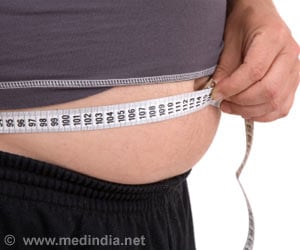Research by scholars at the University of Chicago and Arizona State University has said that Mexican-Americans are the most active group in America
Research by scholars at the University of Chicago and Arizona State University has said that Mexican-Americans are the most active group in America and may benefit from exercise that researchers typically have not measured.
The new research, which used electronic devices to measure people's movement, challenges other studies based on self-reports that claimed non-Hispanic whites are most likely to be physically active.The researchers found that nearly 27 percent of Mexican-Americans met a national goal of getting at least 30 minutes of moderate activity five days a week or vigorous activity for 20 minutes at least three days a week; about 20 percent of whites and 15 percent of blacks achieved that level of exercise.
In research based on self-reports, 36 percent of whites and 25 percent of blacks and Mexican-Americans said they met the activity standard. That information appears in an article, "Disparities in Data on Healthy People 2010 Physical activity Objectives Collected by Accelerometry and Self-Report," published online Feb. 11 in the American Journal of Public Health.
"Those self-reported findings attributing higher activity levels in non-Hispanic whites show that people are likely to have difficulty estimating their activity levels," said Sandra Ham, now a graduate student at the University of Chicago, who based the paper on her work as a researcher with the U.S. Centers for Disease Control and Prevention.
"Surveys obtain information that is easy to report — how much time people block out of their daily schedules for physical activity — and that often includes warm-up and rest periods, whereas the monitors measured the actual time being active," she added.
Mexican-Americans and other Latinos may not report all of their activity on surveys because they often have jobs that require manual labor, Ham said, and most national surveys do not ask about physical activity at work. They also may walk and use public transit more often than other groups because their rates of car ownership are relatively low, she added.
Advertisement
Ham added that the finding of additional exercise "may help explain the Hispanic paradox—the puzzling findings of many studies that show Hispanics enjoy better health outcomes than other U.S. adults with the same low socioeconomic status."
Advertisement
"Accelerometers are more effective in measuring occupational time, which is difficult to assess through self-report and is therefore not measured in the surveys reported by Healthy People 2010," said Ainsworth. Healthy People 2010 is an initiative by the U.S. Department of Health and Human Services to establish goals for physical activity and other health-related factors. "Mexican-Americans are generally employed in jobs that require more physical activity," she said.
Accelerometers are particularly effective in measuring how much people walk during their jobs and their travel — something that many people do not account for when questioned about their physical activity. Similarly, mothers at home who walk and are active in caring for children may not account for that activity when questioned about their leisure time physical activity.
The information for the paper was drawn from the National Health and Nutrition Examination Survey, which used accelerometers to measure activity for 10,000 people in a broad range of Americans ages 6 and older. The study reported in the American Journal of Public Health focused on whites, Mexican-Americans and blacks to learn more about health disparities between those groups. The sample of people in other ethnic groups is too small to do the same kind of research.
Source-Eurekalert
RAS














